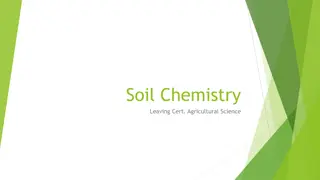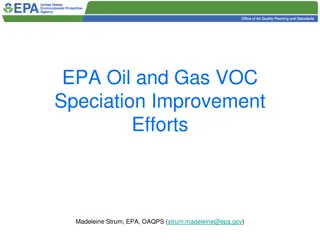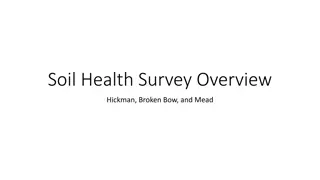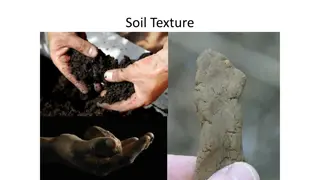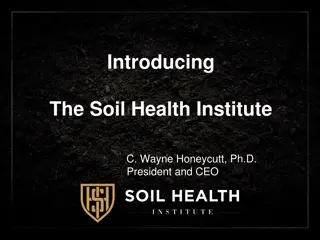Understanding Soil Profiles in Agricultural Science
Soil profiles are essential for classifying soils, with main profiles being Brown Earth, Podzol, and Gley. It's crucial to draw these profiles accurately for exams, considering horizons like O Horizon, A Horizon, B Horizon, and Bedrock. Brown Earth has a thick O horizon with uniform brown color, Podzol has a black O horizon due to acidic leaf litter, and Gley soils feature a mottled blue/green appearance. Practice drawing these profiles for better understanding and exam preparation.
Download Presentation

Please find below an Image/Link to download the presentation.
The content on the website is provided AS IS for your information and personal use only. It may not be sold, licensed, or shared on other websites without obtaining consent from the author. Download presentation by click this link. If you encounter any issues during the download, it is possible that the publisher has removed the file from their server.
E N D
Presentation Transcript
Soil Profiles Leaving Cert. Agricultural Science
Classification Soil profiles are a useful method of classifying soils. Soil profiles are determined by examining the proportions of each horizon and The colour of each horizon For your leaving cert exam there are 3 main profiles to know: Brown Earth Podzol Gley Students are expected to draw each profile for the exam
Drawing a soil profile As for any diagram in the exam, give yourself at least half a page Use pencil You can use colour but this isn t a good idea if you are against time The examiner is looking for correct proportions, and correct labels to indicate colours.
Horizons O Organic horizon This is topmost layer, made of vegetation, humus, etc. A Top soil A horizon is a mixture of mineral and organic particles Most important layer Size of A determines the quality of a soil B Sub soil Mineral matter mostly: sand, silt, and clay C Bedrock / Broken rock
Brown Earth Thick O horizon, i.e. plenty of humus in soil Brown earths have an even distribution of organic And mineral particles, this leads to the uniform brown colour in each horizon
Podzol Black O Horizon due to acidic leaf litter Bleached (not as brown) A Horizon due to leaching of minerals Iron pan formed between A + B horizons. Due to the accumulation of Iron and Aluminium from top soil. Impermeable to water and plant roots Note that the proportions for Brown Earth and Podzol soils are the same, when drawing them in the exam it s easy to remember the only structural Difference is the iron pan
Gley Soils Very narrow O horizon key difference in the formation of gley vs. bog (a lot of organic matter) A Horizon very thin little to no organic matter, bleached/grey in colour B Horizon is incredibly large by comparison to Brown Earth and Podzol. It has a mottled blue/green appearance due to anaerobic bacteria. This will turn orange/red if exposed to oxygen
Study advice Go back through exam papers and practice drawing each of the three soil profiles. Check the marking scheme to see how many marks are awarded in each case. Remember when drawing, use at least half a page and make notes/labels very clear Use pencil in case you make a mistake Watch your time in the exam

 undefined
undefined










